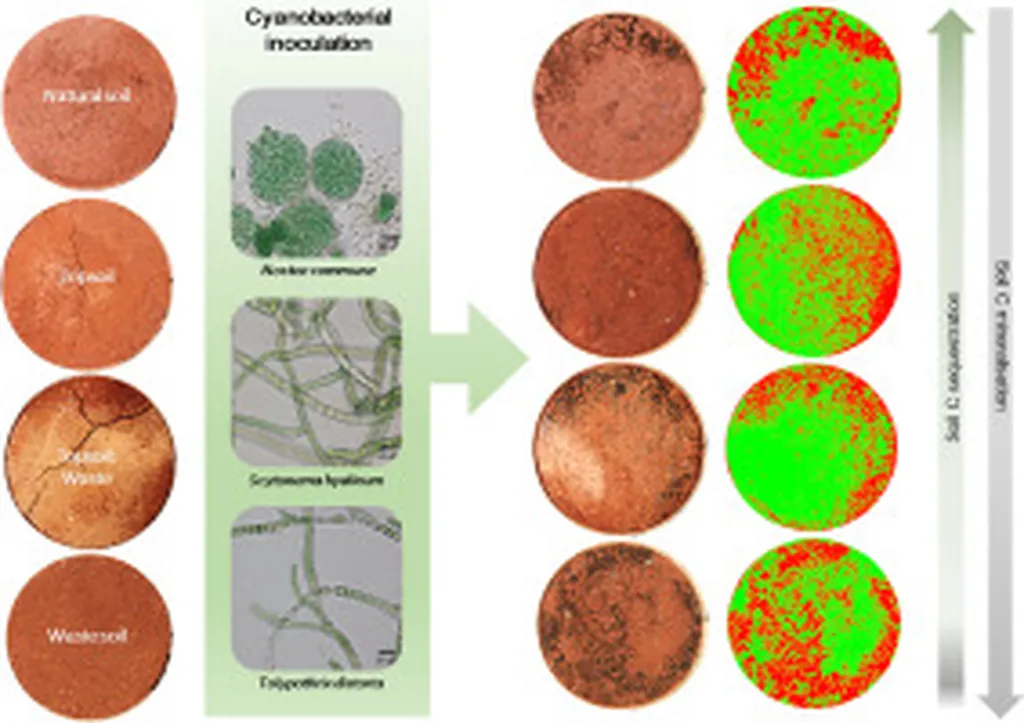In the face of accelerating soil degradation driven by climate change, scientists are turning to an ancient ally: cyanobacteria. These microscopic organisms, the only prokaryotes capable of oxygenic photosynthesis, are emerging as a promising biotechnological solution for soil restoration. A recent review published in the journal *Microorganisms* synthesizes the latest findings on cyanobacteria and their potential to revolutionize soil management, particularly in degraded and arid ecosystems.
Lead author Matias Garcia, a doctoral student at the Universidad de La Frontera in Chile, explains, “Cyanobacteria are unique in their ability to capture atmospheric carbon and nitrogen, release exopolysaccharides that stabilize the soil, and facilitate the development of biological soil crusts, or biocrusts.” These biocrusts play a crucial role in ecosystem balance, contributing to soil fertility, water retention, and carbon sequestration.
The review highlights the convergence of multi-omics tools—metagenomics, metatranscriptomics, and metabolomics—which have advanced our understanding of cyanobacterial dynamics and their symbiotic interactions with microbial consortia. “These tools allow us to identify and predict resilient microorganisms suited to challenging degraded soils,” Garcia notes. “They also enable us to detect prophages or cyanophages within microbiomes, offering a novel approach to enhance carbon sequestration.”
The implications for the energy sector are significant. As the world seeks to reduce carbon emissions and mitigate climate change, the ability to enhance carbon sequestration in degraded soils could play a pivotal role. Cyanobacteria’s potential to stabilize soil and improve its fertility can also contribute to sustainable agriculture, reducing the need for chemical fertilizers and promoting biodiversity.
Garcia and his colleagues propose a roadmap for translating molecular-level knowledge into scalable biotechnological strategies for soil restoration. This includes the use of native biocrust strains and the exploration of cyanophages to enhance cyanobacterial photosynthetic activity. “By bridging ecological functions with cutting-edge omics technologies, we can harness the critical role of cyanobacteria as a nature-based solution for climate-smart soil management,” Garcia asserts.
The research underscores the importance of interdisciplinary collaboration, combining ecological insights with advanced bioinformatics and molecular biology techniques. As we grapple with the challenges of climate change and soil degradation, cyanobacteria offer a beacon of hope, demonstrating the power of nature-based solutions in the fight against environmental degradation.
In the words of Garcia, “This study highlights the critical role of cyanobacteria as a nature-based solution for climate-smart soil management in degraded and arid ecosystems.” As we look to the future, the integration of these microscopic powerhouses into our soil restoration strategies could pave the way for a more sustainable and resilient planet.

